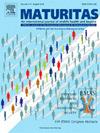Cardiovascular disease and female sexual health across the life span: a bidirectional link
IF 3.6
2区 医学
Q2 GERIATRICS & GERONTOLOGY
引用次数: 0
Abstract
Epidemiological research reveals that around 40 % of women aged 18–59 report significant concerns about their sexual experiences. Endothelial function and proper arterial blood flow through the hypogastric and pudendal arteries are critical in women for a normal vasculogenic response to sexual stimulation. Organic causes of female sexual dysfunction (FSD) often stem from neuropathy or vascular complications linked to cardiovascular risk factors. The relationship between cardiovascular disease (CVD) and FSD is multifactorial, influenced by various factors such as disease severity, physical and physiological factors, social determinants and factors related to medication use. Additionally, the pathophysiological mechanisms implicated in FSD of CVD patients include vascular, physical, psychological and hormonal factors. Hypertension, stroke, and myocardial infarction are closely interrelated with FSD, which is not the case for coronary heart disease, dyslipidemia, and peripheral obstructive artery disease. Hormonal treatment for sexual dysfunction in women with cardiovascular risk factors is discussed, concerning menopausal hormone therapy, tibolone, selective estrogen receptor modulators, vaginal estrogen, prasterone and testosterone therapy. On the other hand, the beneficial effect of sexual activity on cardiovascular health has been gaining supportive evidence. In healthy postmenopausal women aged 45–60, penile-vaginal intercourse has been suggested to positively influence cardiac autonomic functions, as indicated by heart rate variability. However, effectively addressing the challenges of aging and further highlighting the positive impact of sexual activity on cardiac health in selected female populations could significantly enhance life motivation and promote a healthy lifestyle during this stage. The present review elucidates the bidirectional relationship between CVD and female sexual function.
心血管疾病与女性一生的性健康:双向联系
流行病学研究表明,在18-59岁的女性中,约有40%的人对自己的性经历表示严重担忧。内皮功能和通过胃下动脉和阴部动脉的正常动脉血流对于女性对性刺激的正常血管生成反应至关重要。女性性功能障碍(FSD)的器质性原因通常源于与心血管危险因素相关的神经病变或血管并发症。心血管疾病(CVD)与FSD之间的关系是多因素的,受疾病严重程度、生理和生理因素、社会决定因素和药物使用相关因素等多种因素的影响。此外,CVD患者FSD的病理生理机制包括血管、生理、心理和激素因素。高血压、中风和心肌梗死与FSD密切相关,而冠心病、血脂异常和外周阻塞性动脉疾病则并非如此。讨论了有心血管危险因素的女性性功能障碍的激素治疗,包括绝经期激素治疗、替博龙、选择性雌激素受体调节剂、阴道雌激素、普睾酮和睾酮治疗。另一方面,性活动对心血管健康的有益影响已经获得了支持的证据。在45-60岁的健康绝经后妇女中,经心率变异性证实,阴茎-阴道性交对心脏自主神经功能有积极影响。然而,有效应对老龄化的挑战,并进一步强调性活动对特定女性人群心脏健康的积极影响,可以显著增强这一阶段的生活动力,促进健康的生活方式。本文综述了心血管疾病与女性性功能之间的双向关系。
本文章由计算机程序翻译,如有差异,请以英文原文为准。
求助全文
约1分钟内获得全文
求助全文
来源期刊

Maturitas
医学-妇产科学
CiteScore
9.10
自引率
2.00%
发文量
142
审稿时长
40 days
期刊介绍:
Maturitas is an international multidisciplinary peer reviewed scientific journal of midlife health and beyond publishing original research, reviews, consensus statements and guidelines, and mini-reviews. The journal provides a forum for all aspects of postreproductive health in both genders ranging from basic science to health and social care.
Topic areas include:• Aging• Alternative and Complementary medicines• Arthritis and Bone Health• Cancer• Cardiovascular Health• Cognitive and Physical Functioning• Epidemiology, health and social care• Gynecology/ Reproductive Endocrinology• Nutrition/ Obesity Diabetes/ Metabolic Syndrome• Menopause, Ovarian Aging• Mental Health• Pharmacology• Sexuality• Quality of Life
 求助内容:
求助内容: 应助结果提醒方式:
应助结果提醒方式:


